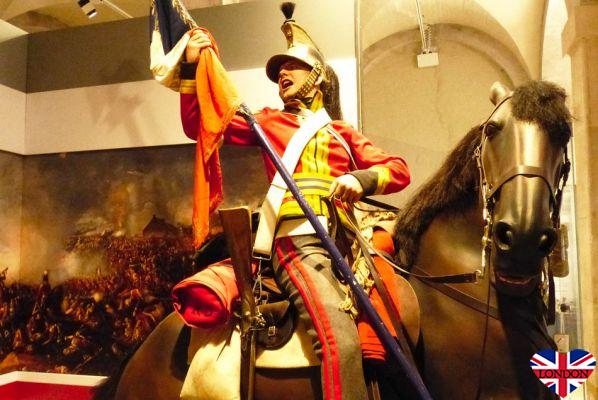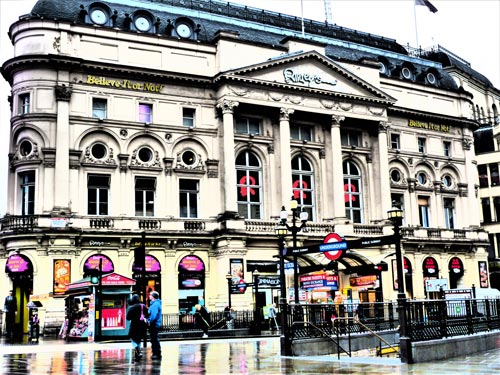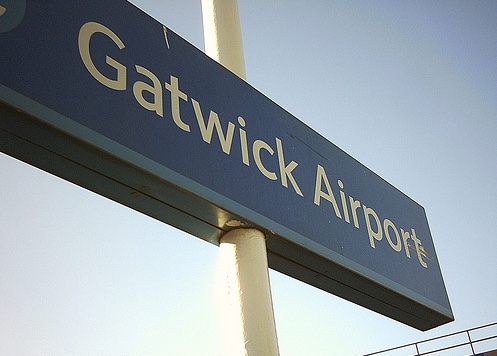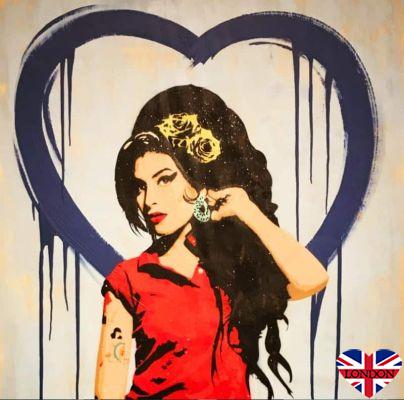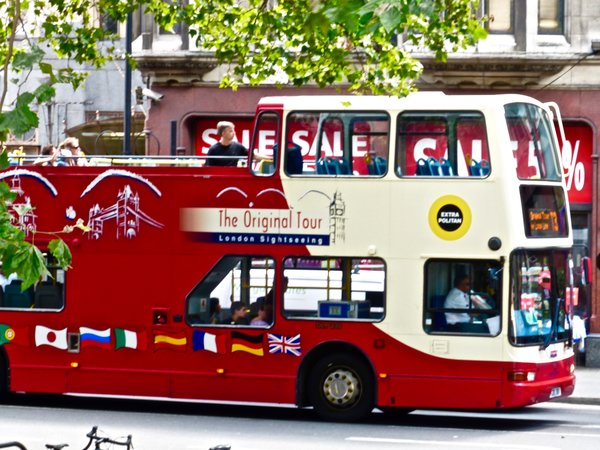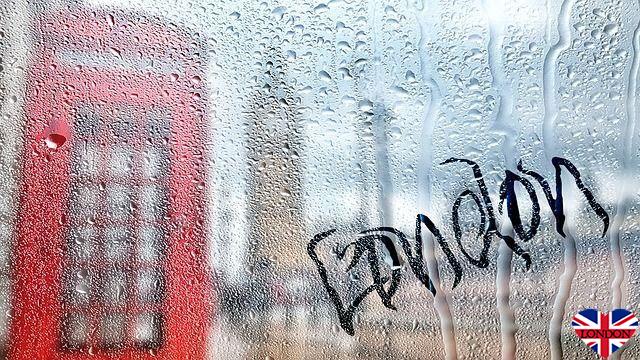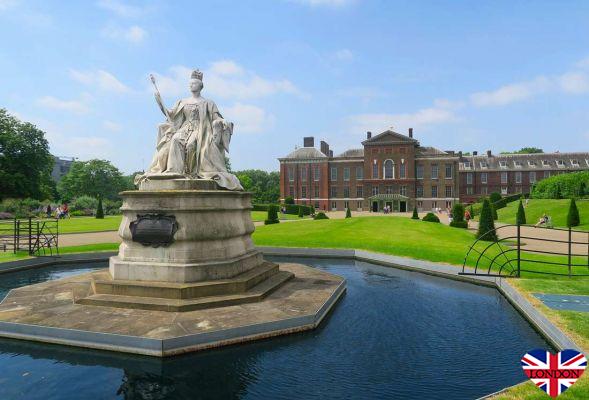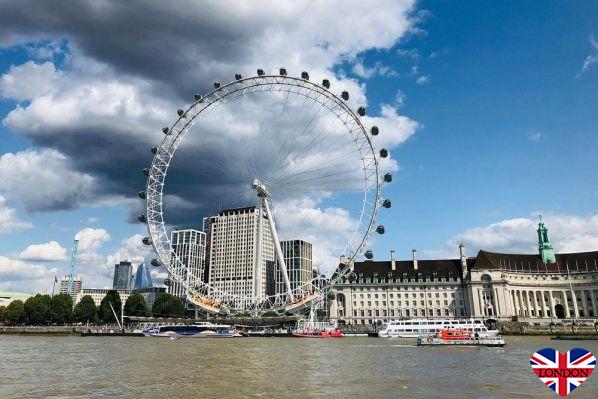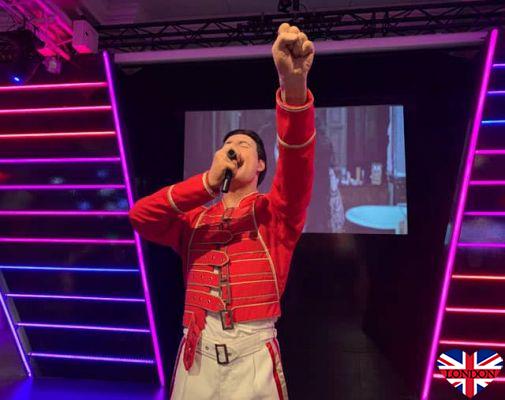
The Tate Modern, also known as the “Cathedral of Modern Art”, is a museum of modern art located in Bankside, on the right bank of the Thames. The works are exhibited in a former power station built in the 40s which offers a spacious and light-flooded setting.
With the Museum of Modern Art (MOMA), the Guggenheim Museum in New York and the Pompidou Museum in Paris, the Tate Modern has one of the world's finest collections of British and international modern art.
History of the Tate Modern Museum in London
This old power station called "Bankside Power Station" was built in two phases, between 1947 and 1963, by Sir Giles Gilbert Scott (1880-1960), designer of the famous British red telephone box.
Following the rise in the price of oil, the site was abandoned in 1981 and threatened with destruction. It was finally saved in 1995 and Swiss architects completely redesigned the immense carcass of the factory, a large unsightly parallelepiped of red brick and topped with a factory chimney.
After five years of work and more than 134 million pounds (210 million euros) spent, the Tate Modern was inaugurated by the Queen on May 12, 2000.
Since then, due to lack of space in the National Gallery, the museum has housed the collection of works of art by Sir Henry Tate, which he donated to the British nation.
Today visitors enter through the impressive turbine hall, of dizzying dimensions, over 150m long, which once housed the generators.
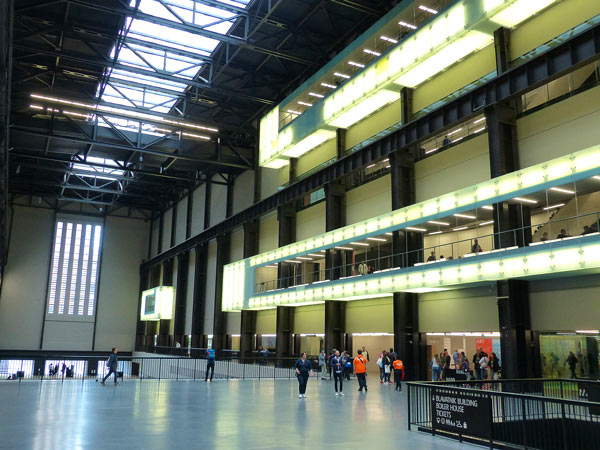
Finally, the Tate Modern is the most visited contemporary art museum in the world, with a record of 5 million visitors in 7.
Tate museums
The Tate is a family of four British museums comprising:
- Tate Britain founded in 1897 and called until 2000 Tate Galerie. Specialty: British art
- Tate Modern founded in 2000. Specialty: international modern and contemporary art
- Tate Liverpool founded in 1988. Specialty: international and British modern and contemporary art
- Tate St Ives founded in 1983. Specialty: modern British art
What to see at Tate Modern?
The museum includes more than 70 works representing various movements such as surrealism, abstract expressionism, pop art, minimalism or conceptual art.
The museum innovates by presenting the collections thematically and not chronologically. The works are therefore divided into four main themes:
- Landscape / Matter / Environment : landscape, material, environment;
- Still Life / Object / Real Life : still life, object, life and reality;
- History / Memory / Society : history, memory, society;
- Nude / Action / Body : nude, action, body.
The permanent collections (free access)
The Tate Modern brings together the works of the most famous modern and contemporary artists such as William Hogarth, Thomas Gainsborough, Francis Bacon, William Blake, Frederic Leighton, Georges Braque, Pablo Picasso ... And also dares to mix old, modern art with art living and cinema.
Ansi, you will cross the XXth and XXIst centuries traveling between impressionism and conceptual art.
Some favorite works:
- The Aphrodisiac Telephone or The Lobster Telephone by Salvador Dalí - 1936
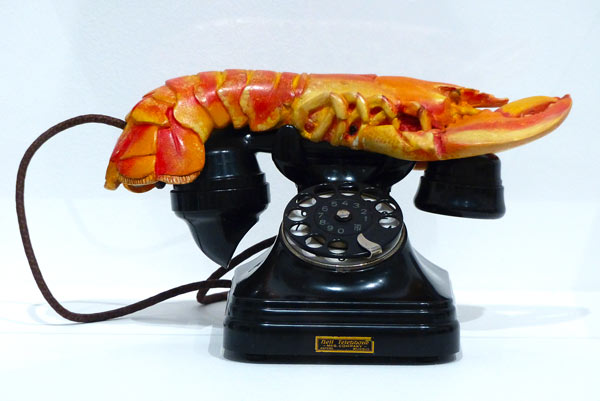
- Marilyn Diptych de Andy Warhol - 1962

- Nataraja de Bridget Riley - 1993

Temporary exhibitions (paying access)
In addition to its permanent collection, the Tate Modern organizes temporary exhibitions, including three major events per year.
Tate Modern: a good free plan!
Good news, the permanent exhibition at Tate Modern is free. However, a donation of £ 4 is encouraged but not required.
On the other hand, the temporary exhibitions are paying up to £ 15. Free for museum members. feel free to consult the program to know the current exhibition.
Tate Modern for kids
Free thematic routes for children are available from the information desks. In addition, “budding artists” workshops are offered at level 0 in the Clore Learning Center space every weekend and during certain school holidays.
Useful information
- Free guided tours. Information and reservation on the museum site.
- Multimedia guides in French available at level 1 for £ 3.50
- Photographs without flash and without tripod allowed for permanent collections
- Free Wifi
- Paying shuttle (Tate Boat) connecting Tate Britain to Tate Modern every 40 minutes. Tickets on sale at the quay or at the museum. Possibility to use the Oyster Card, reduction with Travelcard. Prices and information on the museum site.
The rooftop of the Tate Modern

The museum has two panoramic terraces located on the 3rd and 6th floor where there is a restaurant and a cafe from where you can enjoy a beautiful view of the London skyline.
On the menu: shard, 20 fenchurch street and the Millenium Bridge, a pedestrian bridge that connects the museum to the Saint Paul's cathedral.
Tate Modern opening hours
Sunday - Thursday : 10h00 -18h00
Friday Saturday : 10:00 pm - 22:00 pm
Closed on 24, 25 and 26 December BUT open on 1er January.
What to visit next to Tate Modern?
A few steps from the Tate Modern, is the Shakespeare's Globe, a magnificent replica of an Elizabethan theater. A little further on the same shore, do not miss the famous cruiser HMS Belfast whose most striking feat of arms is his participation in the Normandy landings on June 6, 1944.
Where is the Tate Modern located?
Address : Bankside, London SE1 9TG
Metro bus
bus River shuttles
River shuttles


